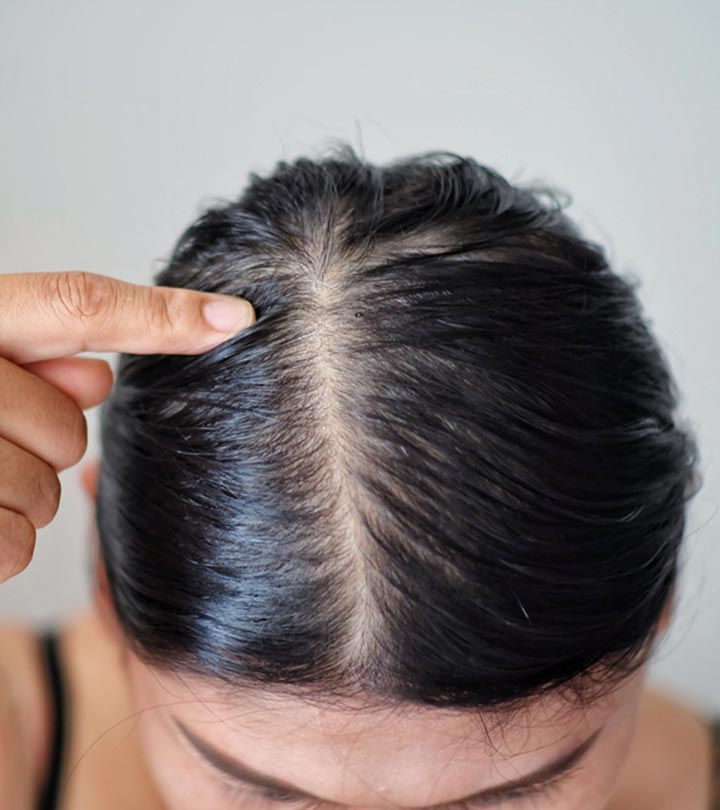
Ayurvedic treatment for hair loss (known as Khalitya or Indralupta in Ayurveda) is highly individualized and holistic. It’s not just about topical applications; it addresses the root causes which are often internal imbalances.
Ayurveda identifies several factors contributing to hair loss:
- Pitta Dosha Imbalance: Excess Pitta (heat, inflammation) is considered a primary cause, often linked to premature graying and hair thinning. This can be due to excessive sun exposure, spicy/salty/sour foods, anger, stress, and certain medications.
- Vata Dosha Imbalance: Excess Vata (dryness, roughness, lightness) can lead to dry, brittle hair, split ends, and hair fall due to inadequate nourishment.
- Ama (Toxins): Accumulation of undigested toxins due to poor digestion or metabolism can clog hair follicles and inhibit hair growth.
- Rakta Dhatu (Blood Tissue) Impurity: Impurities in the blood can affect hair follicle health.
- Asthi Dhatu (Bone Tissue) Weakness: Hair is considered a byproduct (Mala) of Asthi Dhatu. Weakness in bone tissue can reflect as poor hair health.
- Stress (Manasika Bhava): Mental stress, anxiety, and emotional imbalances significantly impact hair health.
- Nutritional Deficiencies: Lack of proper nutrients due to poor diet or absorption.
- Hormonal Imbalances: (e.g., thyroid issues, PCOD, menopause), often related to dosha imbalances.
- Scalp Conditions: Fungal infections, dandruff (Dandruka) which blocks follicles.
- Genetic Predisposition (Prakriti): Some individuals are naturally predisposed.
The Ayurvedic treatment aims to:
- Balance vitiated Doshas (especially Pitta and Vata).
- Purify the blood and remove Ama.
- Nourish hair follicles and strengthen hair roots.
- Reduce stress and improve mental well-being.
- Address underlying systemic issues.
- Promote healthy hair growth.
Here’s a detailed overview of Ayurvedic treatment for hair loss:
I. Shodhana (Panchakarma – Detoxification and Purification Therapies): Panchakarma is recommended for chronic or severe hair loss, especially if associated with significant dosha imbalances and ama accumulation.
- Virechana (Therapeutic Purgation):
- Description: Medically induced purgation to eliminate vitiated Pitta and Ama from the gastrointestinal tract. Often preceded by Snehapana (internal oleation with medicated ghee).
- Benefits: Highly effective if hair loss is linked to excess Pitta (e.g., inflammatory scalp conditions, premature graying, burning sensation on scalp). It cleanses the liver and blood, which are crucial for healthy hair.
- Nasya (Nasal Administration):
- Description: Instillation of medicated oils (like Anu Taila, Ksheerabala Taila, Brahmi Taila, or Bringamalaka Taila) into the nostrils.
- Benefits: Nourishes the nasal passages, which are considered a gateway to the head. It helps to calm the nervous system, improve blood circulation to the scalp, and strengthen the hair roots, especially beneficial for Vata and Pitta imbalances affecting the head.
- Shirodhara:
- Description: A continuous, gentle stream of warm medicated oil (like Brahmi Taila, Bhringaraj Taila), medicated buttermilk, or milk is poured over the forehead.
- Benefits: Profoundly calms the mind and nervous system, reduces stress, anxiety, and mental fatigue – all significant contributors to hair loss. It helps cool the head (if Pitta is high) and deeply nourishes the hair roots.
- Shiro Abhyanga (Head Massage) & Localized Oil Application:
- Description: Regular, gentle massage of the scalp with warm medicated oils.
- Oils Used: Bhringaraj Taila, Brahmi Taila, Amla Taila, Neem Taila, Coconut Oil (especially virgin coconut oil), Argan Oil, Castor Oil (mixed with lighter oil), Jatamansi Taila, Mahabhringaraj Taila.
- Benefits: Improves blood circulation to the scalp, nourishes hair follicles, strengthens hair roots, reduces dryness (Vata), cools the scalp (Pitta), and prevents infections. It also calms the mind.
- Basti (Medicated Enema):
- Description: While not directly for hair, specific Basti formulations can balance systemic Vata Dosha, which can contribute to dryness and brittleness of hair.
- Benefits: Addresses underlying Vata imbalances throughout the body, supporting overall health which reflects in hair.
II. Shamana (Palliative Therapies & Herbal Medicines): These involve internal and external medications to manage symptoms and strengthen the body.
- Internal Herbs & Formulations (for balancing doshas, purifying blood, and nourishing tissues):
- Bhringaraj (Eclipta alba): King of herbs for hair. Promotes hair growth, prevents hair loss and premature graying. It balances Pitta and Kapha.
- Amalaki (Indian Gooseberry): Rich in Vitamin C, antioxidant, anti-inflammatory, balances Pitta, nourishes hair, and promotes growth.
- Brahmi (Bacopa monnieri): Nervine tonic, reduces stress, and supports healthy hair.
- Ashwagandha (Withania somnifera): Adaptogen, reduces stress, and nourishes the body, especially good if hair loss is stress-related.
- Jatamansi (Nardostachys jatamansi): Calms the nervous system, promotes hair growth.
- Neem (Azadirachta indica): Blood purifier, anti-inflammatory, especially useful for scalp infections or dandruff.
- Guduchi (Tinospora cordifolia): Immunomodulator, detoxifier, helps in Ama digestion.
- Shatavari (Asparagus racemosus): Cooling, nourishing, beneficial if hair loss is hormonal (Pitta related).
- Triphala (Amalaki, Bibhitaki, Haritaki): Gentle detoxifier, supports digestion and nutrient absorption, beneficial for overall health.
- Loha Bhasma / Mandur Bhasma: Iron preparations used for anemia-related hair loss (under strict medical supervision).
- Prasanna (Ayurvedic Wine): Used to nourish tissues and improve circulation (under guidance).
- External Applications:
- Herbal Hair Washes/Packs: Use powders like Shikakai (Acacia concinna), Reetha (Sapindus mukorossi), Amla, Brahmi, Bhringaraj as natural cleansers. Hair packs with these herbs (mixed with water, yogurt, or aloe vera gel) can deeply nourish the scalp.
- Neem Paste/Oil: For dandruff or scalp infections.